Introduction
Molas are colorful panels of hand-sewn fabric that form the front and back of the traditional blouses that Guan women wear. They are hand made by the Guna women using a reverse appliqué technique. The Guna people’s identity, history, and worldview are reflected in these textiles made by the Guna women and are much more than just decorational clothing pieces. Guna Yala Molas tell stories, reflect identity, and preserve tradition.Each mola is unique, carrying centuries of tradition passed down through generations.
History and Origins
According to Guna tradition, the art of molas originates from a sacred mythical place where ancestral women first learned the patterns of the universe. Over the centuries, these ever-changing designs were passed down and eventually evolved into the elaborate, colourful textiles of today.
But before sewing colorful fabric molas, like many other indigenous people the Gunas used body painting designs to protect them from evil spirits, sun and insects. With the arrival of European explorers the Gunas gained access to fabrics, thread, and scissors and started expressing those patterns on their clothing. Molas serve not only as garments but also as a medium for storytelling and expressing the Guna worldview.
Over time the Guna women have been perfecting the Mola making from larger pattern and clothing to more refined complex Molas. It is an expression of her community’s worldview and history.
The Art of Making a Mola
The main technique is called reverse appliqué and consist of four basic steps and can be made of 5 overlapping fabric layers of different colors:
- A first layer of rectangular fabric with a drawn pattern on it is stitched to another layer(s) of rectangular fabric.
- Cut out along the drawn design of the upper layer.
- By folding the cut out edges inside the colors of the lower layer(s) will appear.
- The borders are sewn through all the layers of fabric
Depending on the complexity, making a single mola can easily take up to 60 hours depending on the complexity. This process is hand made, no sewing machine does the job.
Designs and Symbolism
Mola are a form of expression for the Gunas, especially the Guna women. Designs vary and cover important aspects of Guna people’s lives which are deeply connected to nature but also to mythical beliefs and history.
Designs can represents:
Geometric designs representing abstraction of natural forms such as
- Labyrinths
- Independent modules
- Diagonal curves
- Arrows
Figurative or representational designs such as
- Mythical Guna worldvisions
- Traditional Guna customs
- Communal way of life
- Personal stories
- Modern motifs related to actual topics
- Nature: animals, plants and marine life
Here are some popular patterns and its significance:
The Quincunxn: The most important Pattern
A Quincunx is an arrangement of five objects in a cross-like pattern with four objects located outside and with the fifth object in its center, like the five-spot on a dice. Now in the Guna worldvision the central object represents the center of the universe. The four elements around the center point towards the cardinal points. Its dynamic upward and downward movement connects the different layers of the Guna worldview. It’s an expression of energy in motion and a very important symbol for the Gunas hence it’s also present in their flag of the Dule Revolution
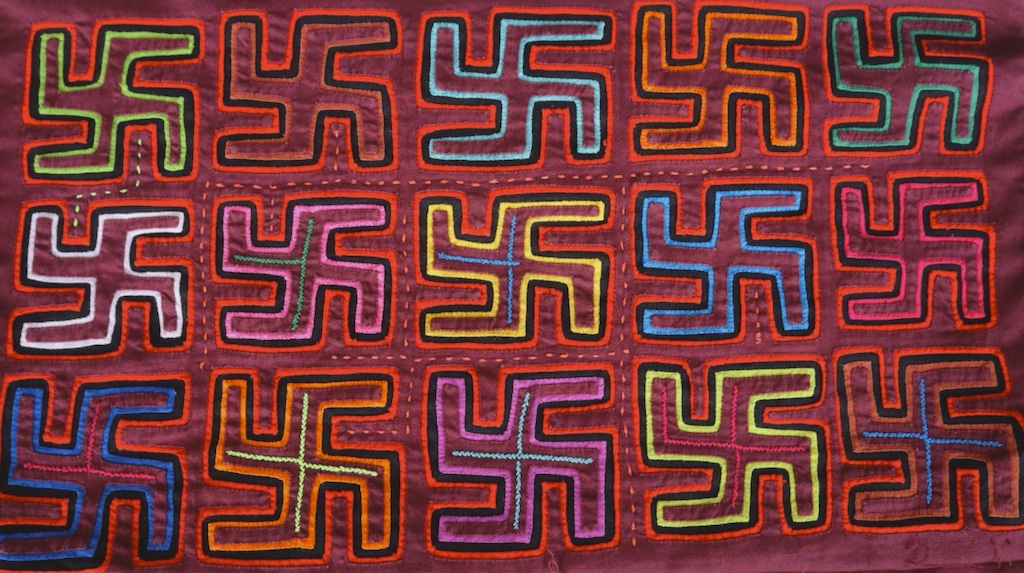
Diagonal Curves
These flowing, open patterns create a sense of motion, inspired by the zigzagging paths of Guna Yala and echoing the designs in Guna men’s baskets. They bring energy to the mola and connect the wearer to the land and community life.Diagonal curves in molas are more than decorative lines—they tell a story of movement and connection. These open, flowing patterns often create a sense of motion, almost like the design is alive. The forms mirror the zigzagging pathways that can be found all across the Guna Yala territory. Diagonal curves, with their kinetic or embossed effects, provide the design vitality and energy while tying the user to the land and everyday life in the community.
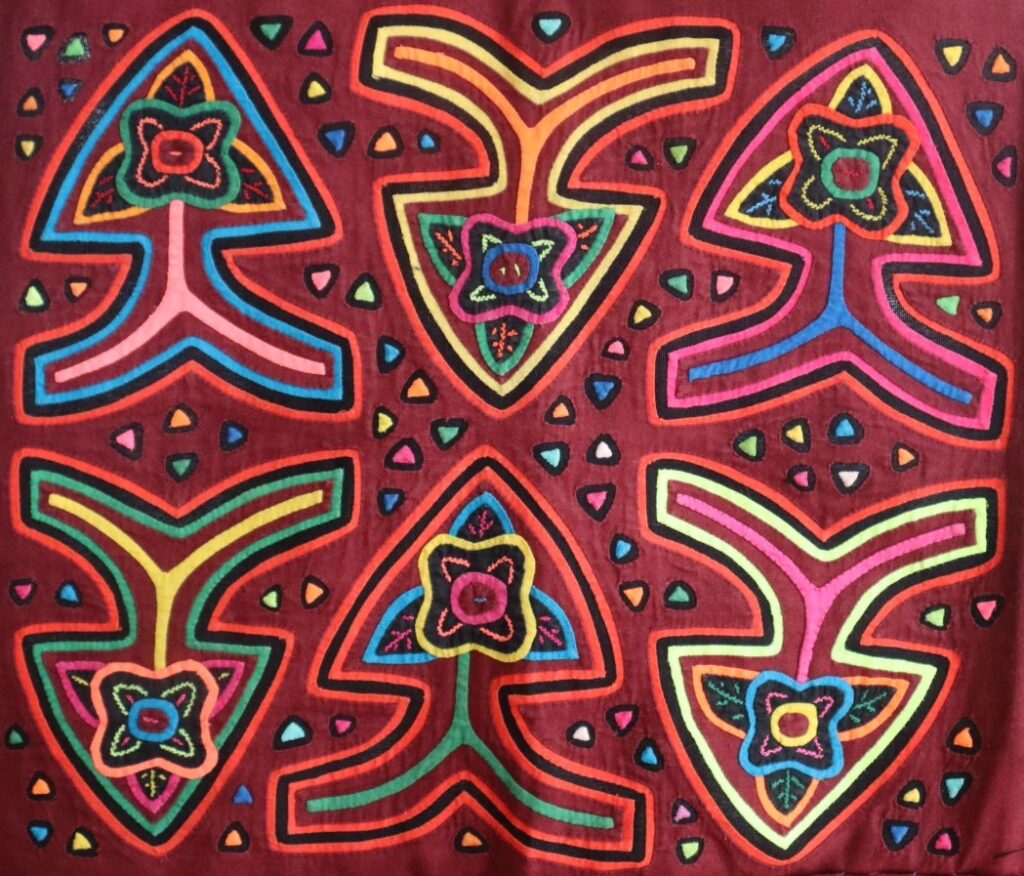
Arrows: Symbols of Supernatural Protection
Arrow designs in molas are made of pointed triangles connected by rods, covering the fabric in intricate patterns. While they may seem still, the shapes are meant to appear in motion, moving inward and outward across the surface. The arrow shapes are intended to appear moving, inside and outward over the surface, even if they may appear still. These abstract designs are thought to provide magical protection when joined and entwined, protecting the Guna women wearing the molas from danger and bad energy.
Labyrinths and Connected Spirals
Labyrinths and connected spirals in molas aren’t just beautiful—they have a deeper meaning. Using straight or curved lines, Guna women create complex, maze-like shapes that were traditionally thought to confuse or distract attackers. These designs also serve a spiritual purpose: they help capture evil spirits and protect the wearer from dangers, reflecting the challenges Guna women have faced throughout history.
Independent Geometrical Modules
Are independent geometrical shapes or motifs that repeat several times with slight variations. molas use parallelism in their geometric patterns to create a feel of order and harmonized rhythm. In Guna culture, the duality of human beings – body and spirit, visible and invisible -finds a parallel in molas. Each geometric module in a mola is complete on its own, yet it only finds full meaning when combined with others to form a larger pattern. This reflects the way each person is both an individual and part of a greater whole, connected to community, ancestors, and the cosmos.
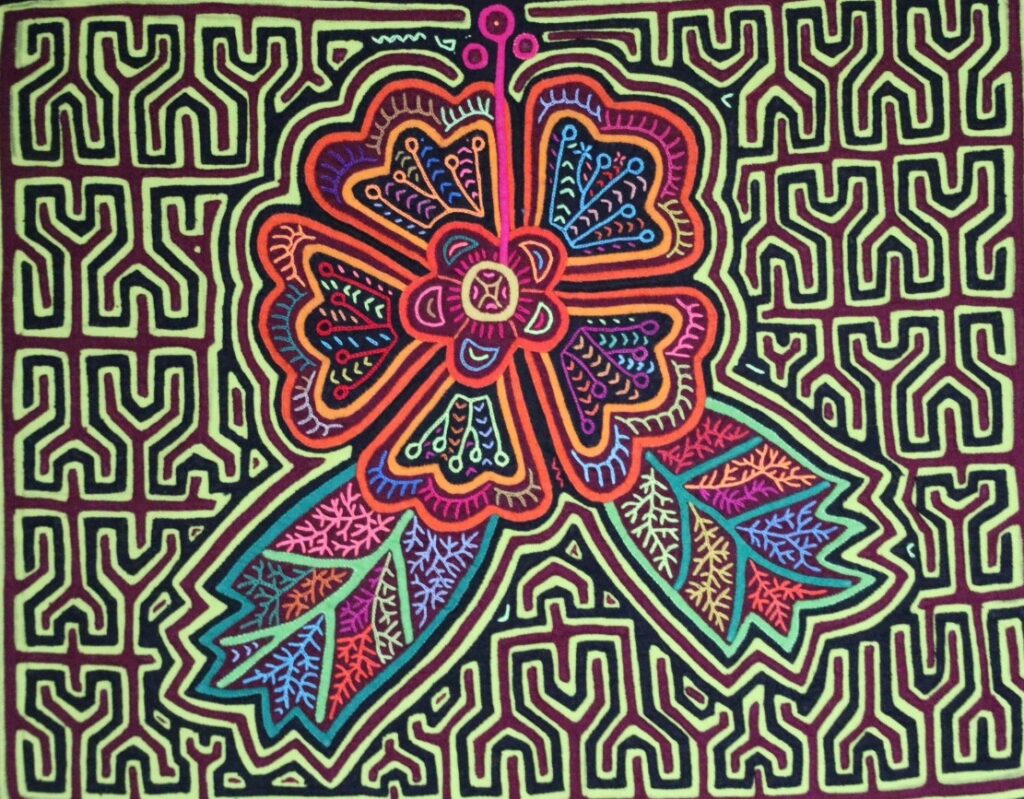
Function in Guna Culture
Molas are an essential part of the Guna culture and are not just decorative because they convey cultural stories and symbolism of the Guna worldview and strengthen the social ties within the Guna community. They are still worn today in everyday life and are an integral part of a Guna woman’s wardrobe. The skill of making Molas is passed down by generations from mothers to their daughters to ensure the ancient knowledge and values keep alive in the present.
Molas Today
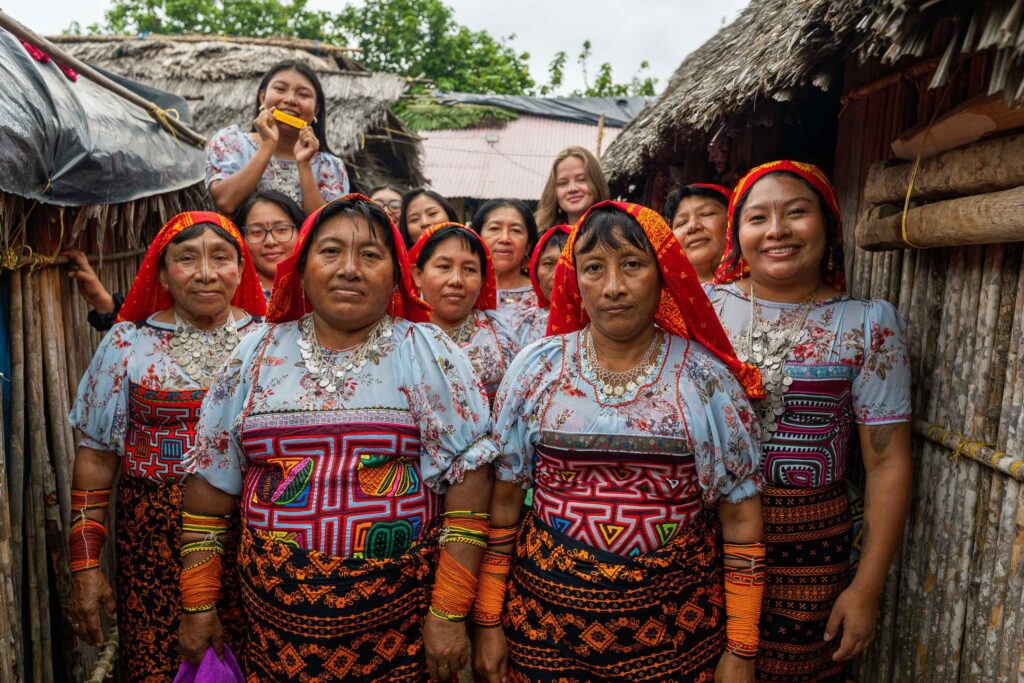
Molas are still an essential part of the Guna women’s wardrobe today and they wear them on a daily basis. The Mola tradition and meaning continues to be preserved and passed down to future generations. With the opening of their territory to tourism, the Guna women have started selling their Molas to visitors which became an important source of income to support their families. Some molas have even been sold as artworks to international galleries and museums, where they are now exhibited and draw attention to the culture and history of the Guna people. In Panama City, there is even a museum dedicated entirely to molas and the Guna, which is definitely worth a visit for anyone interested in this indigenous culture.
Respectful Buying Tips
If you want to bring home a beautiful Mola as a souvenir from your San Blas visit, we recommend you buy your favorite Mola directly from the Guna women who create them. This is far the most meaningful and ethical way to purchase a Mola. Stay away from buying them in tourist souvenir stores and internet knockoffs, where you are not certain about its origin and may not directly support the livelihoods of the indigenous people. When it comes to the price, make sure you pay a fair price and remember that true Molas are genuinely hand sewn with meticulous stitching.
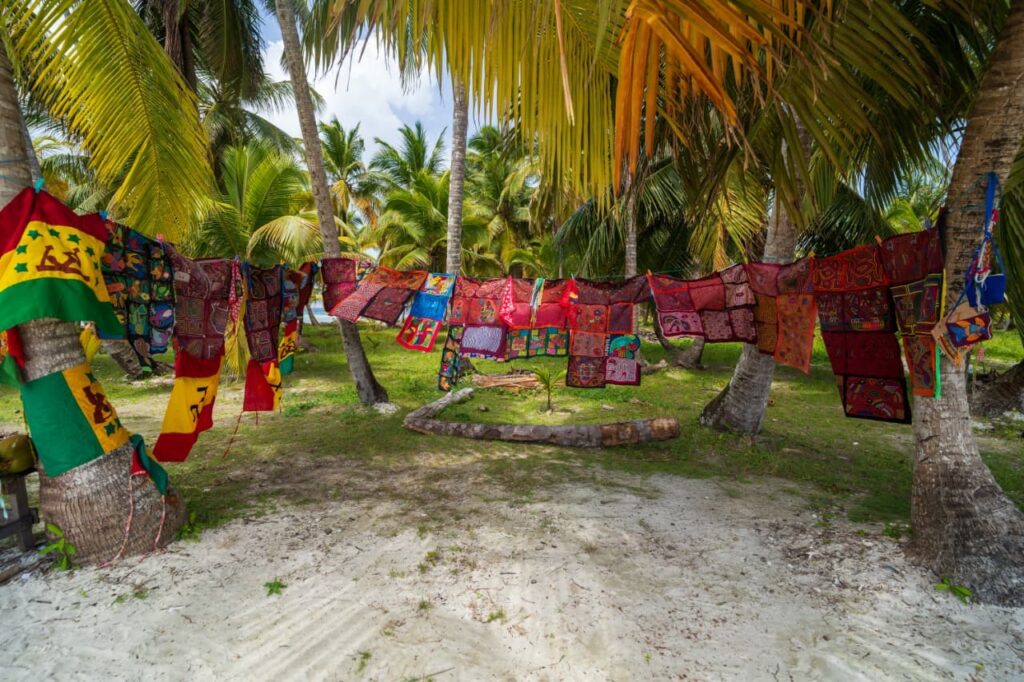
A medium complex designed Mola represents easily 40 hours of handwork. That way you show that you honor the craftsmanship, the time investment and Guna culture.
Conclusion
Molas are much more than just fabrics with colorful decorations. They are part of a long-standing legacy of Guna women who share their distinct perspective on the world, one that is shaped by their ancestors’ customs and in which they live in close proximity to nature. A Mola is more than a common vacation souvenir, it is a form of indigenous cultural expression that will help tourists understand and appreciate the history and worldview of the Guna people. Every Mola has significance and represents the individual viewpoint of the woman who made it.
Discover Guna Yala and the Art of Molas
With our tours, you get more than just a visit to the famous island of San Blas, a must-see destination on many traveler’s bucket list when visiting Panama. With Abisua Travel, you will connect with the Guna culture that makes the San Blas islands so unique. You will experience the art of Molas firsthand, get a close look at these colourful textiles, and maybe see a Guna woman sew a Mola. If you would like to buy a Mola as a souvenir to bring home, there is no more authentic place to buy a Mola directly from the Guna woman artists and directly support their livelihood and the continuation of this living tradition.
Join our tour today and experience the perfect mix of island adventure and cultural discovery in Guna Yala.



0 Comments